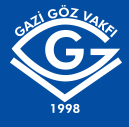Retina-Vitreous
2018 , Vol 27 , Num 3
Vitreoretinal Interface Diseases
Prof. Dr., İnönü Üniversitesi, Göz Hastalıkarı Anabilim Dalı, Malatya, Türkiye
The viteoretinal interface has been identifi ed as the site of many different forms of retinal pathology. The posterior vitreous cortex consists
of densely packed collagen fibrils that insert superficially into the internal limiting membrane (ILM) of the retina and attach to the
ILM by glue-like macromolecules, such as laminin, fibronectin, chondroitin, and heparan sulphate proteoglycans. The strongest vitreoretinal
adhesions have been described at the optic disc, over the retinal blood vessels and at the macular area. Before the development
of optical coherence tomography (OCT), clinicians relied on astute clinical observation and fundoscopy, fl uorescein angiography (FA),
and postmortem histology to make assumptions about the role the vitreoretinal interface plays in macular pathology. OCT has given us
the ability to view the macula in cross sections and thus has improved our understandings of the following known clinical entities; posterior
vitreous detachment (PVD), vitreomacular traction (VMT) syndromes, macular holes (MH), and epiretinal membranes (ERMs).
This article discusses the diagnosis and management of abnormal vitreoretinal interface disorders.
Keywords :
Vitreoretinal interface, diagnosis, management, OCT





